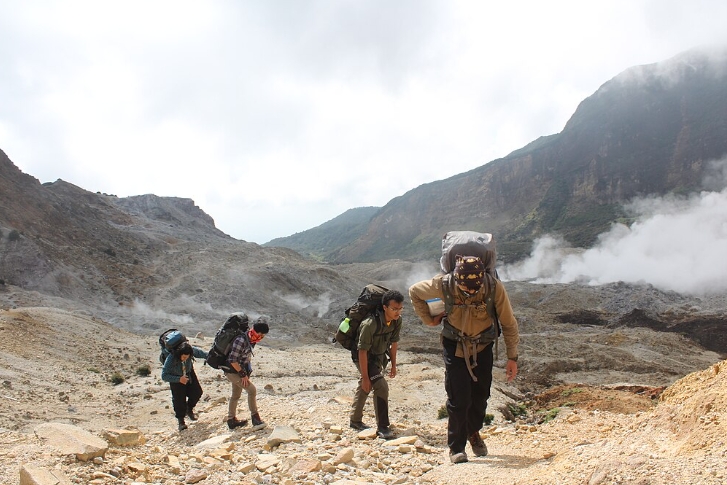
Kawah Mas in Gunung Papandayan, Java, Indonesia
The WKP sites, with their potential reserves and development capacities, include Danau Ranau (42.6 MW / 20 MW), Gunung Endut (38 MW / 35 MW), Gunung Galunggung (110 MW / 110 MW), Gunung Tampomas (32 MW / 30 MW), Gunung Ciremai (27 MW / 25 MW), Songgoriti (35 MW / 35 MW), Oka Ile Ange (31 MW / 10 MW), Lainea (66 MW / 20 MW), Banda Baru (25 MW / 20 MW), and Telaga Ranu (72 MW / 40 MW). The PSPE sites, with potential reserves, are Lokop, Aceh (41 MW), Pincurak, West Sumatra (50 MW), Panti, West Sumatra (131 MW), Cubadak, West Sumatra (66 MW), Srirejo, Lampung (40 MW), Papandayan, West Java (64 MW), Jenawi, Central Java (195 MW), Adum, NTT (30 MW), Bittuang, South Sulawesi (75 MW), and Kadidia, South Sulawesi (66 MW).
Launched in September 2024, the GENESIS platform enhances transparency in the WKP auction process with updated geoscience data features. It supports public access to geothermal survey reports, digital data, and research findings, streamlining the bidding process. The PSPE program involves geoscience surveys, infrastructure development, and exploration drilling over three years, with possible two-year extensions of one year each. Successful PSPE implementers gain priority in WKP auctions and benefits like exploration fee exemptions and import facilities.
Business entities participating in PSPE must deposit 5% of a minimum $10 million exploration commitment as a guarantee to ensure diligent execution. If drilling at least one well is achieved, the guarantee is refunded with interest; otherwise, it is retained as non-tax state revenue. Most PSPE areas have been initially surveyed by the Center for Mineral, Coal, and Geothermal Resources, Geological Agency.
This initiative reflects Indonesia’s commitment to expanding geothermal energy, leveraging digital tools and structured incentives to attract investment and accelerate development in renewable energy sectors.